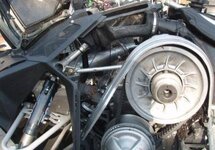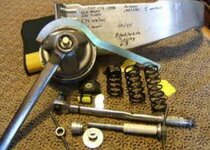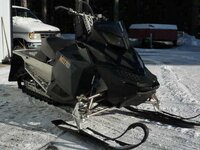H
I agree. I like this thred....
I don't agree that shift out is 1 to 1. That would mean the the diameter the two ends of your belt are the same size. They are only that way somewhere in the middle. I think what Aaen means is that that is the most efficient spot. At that point the clutches react the best.
Belt deflection is a key part of all this. I have noticed that many of our sleds are leaving no belt wear marks on the top edge of our primary. That's either a non achievable top end or a belt too loose.
I've always felt that 20 x 43 gears gave me a top speed of about 80 to 85. With my belt tight, I can break a belt if I try to go faster. My belt goes right to the top of the primary.
I've also found that there isn't much change in clutching with a change in gear ratio. Lower gears feed back less load and thus faster upshift. This shows little or no effect at the bars. Most of us figure it would increase RPM it doesn't often have much affect. It just uses a different spot on the cluch face.
Owen
I don't agree that shift out is 1 to 1. That would mean the the diameter the two ends of your belt are the same size. They are only that way somewhere in the middle. I think what Aaen means is that that is the most efficient spot. At that point the clutches react the best.
Belt deflection is a key part of all this. I have noticed that many of our sleds are leaving no belt wear marks on the top edge of our primary. That's either a non achievable top end or a belt too loose.
I've always felt that 20 x 43 gears gave me a top speed of about 80 to 85. With my belt tight, I can break a belt if I try to go faster. My belt goes right to the top of the primary.
I've also found that there isn't much change in clutching with a change in gear ratio. Lower gears feed back less load and thus faster upshift. This shows little or no effect at the bars. Most of us figure it would increase RPM it doesn't often have much affect. It just uses a different spot on the cluch face.
Owen





